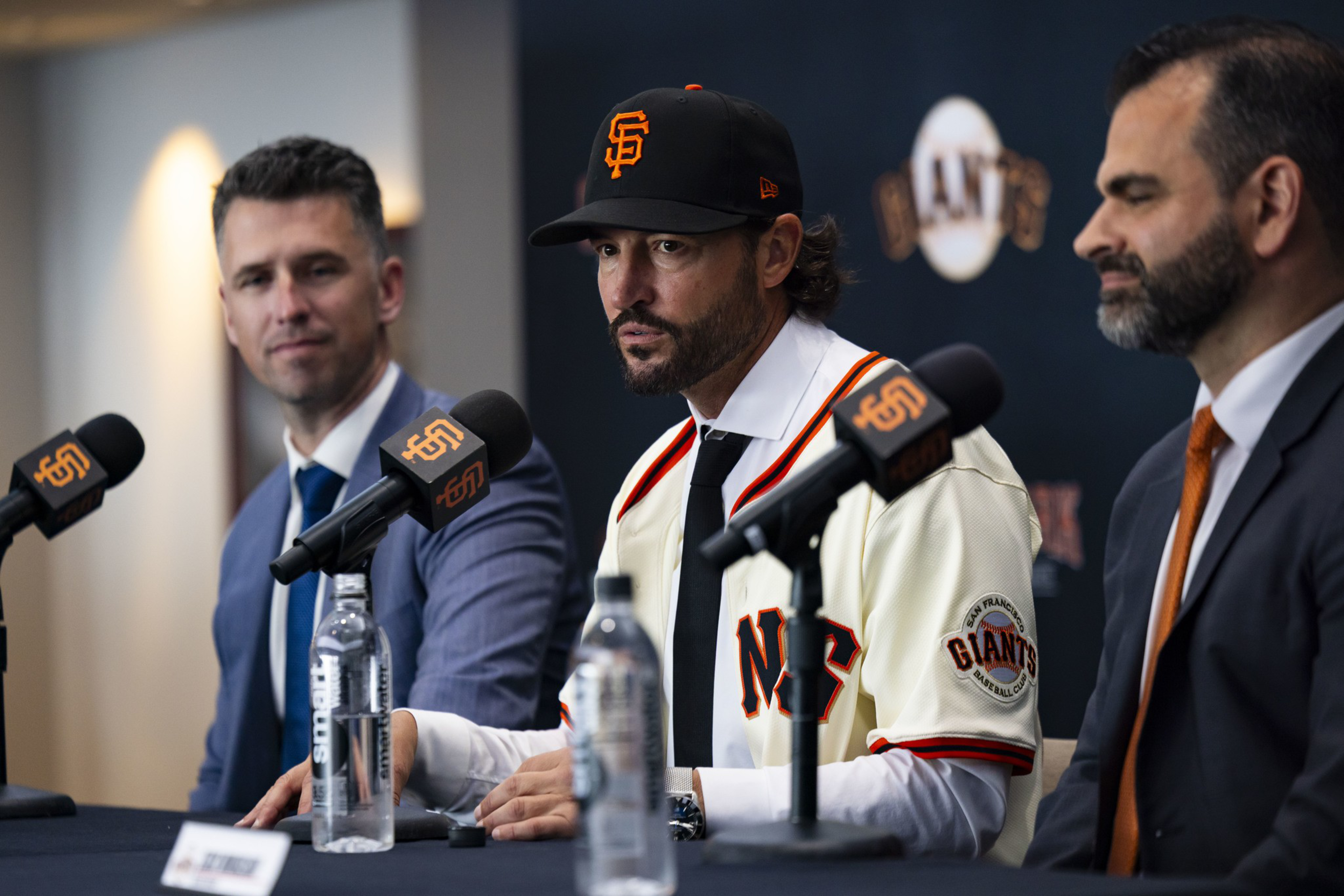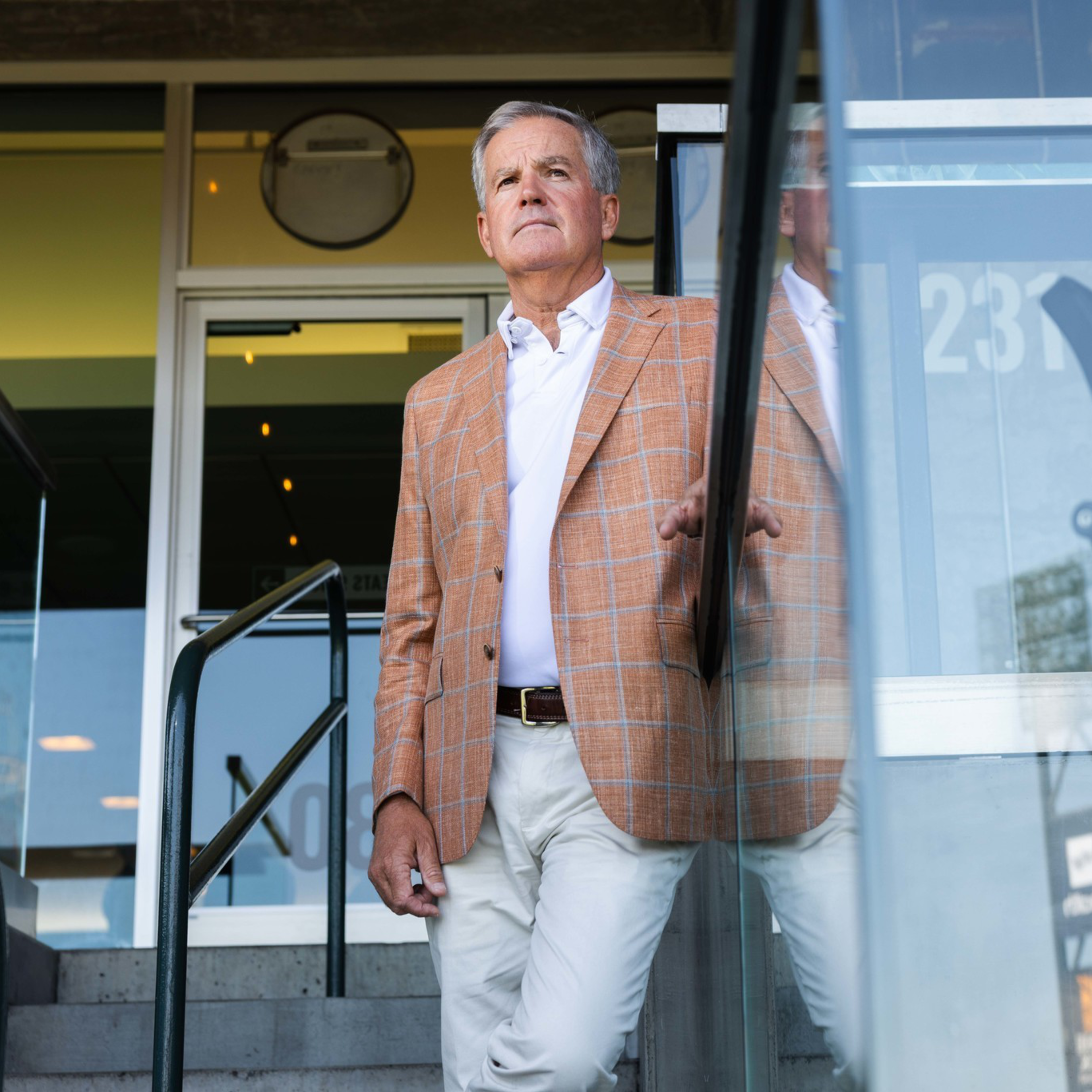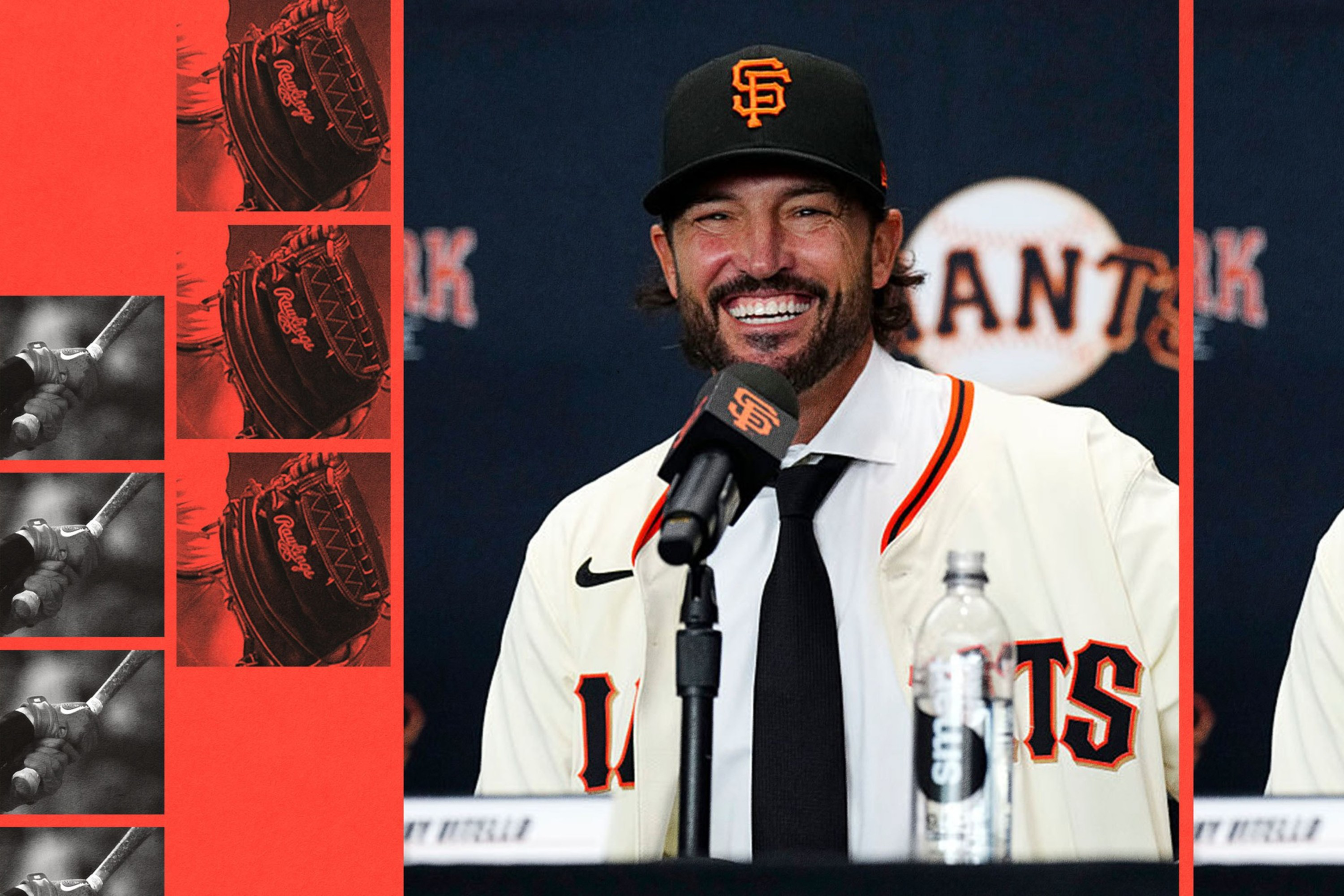Want more ways to catch up on the latest in Bay Area sports? Sign up for the Section 415 email newsletter here and subscribe to the Section 415 podcast wherever you listen.
Buster Posey and the rest of the Giants’ brain trust are banking on Tony Vitello bringing that “it” factor to the dugout and clubhouse, an energetic and charismatic brand of leadership that will inspire players and lead them to new heights on the field.
The task is to significantly elevate the play that led to four straight seasons of non-winning records, and the front office and ownership believe Vitello gives them a head start.
“I’m not in any way saying anything negative about Bob Melvin, who I think is a tremendous manager,” Giants chairman Greg Johnson told The Standard, “but I think what we haven’t really seen is the player development progression. If I look at the last couple of years, I’d say there’s too much talent that wasn’t performing up to its level. So we need to do something different, whether that’s the clubhouse leadership, the accountability, the player development — just a different approach.
“At the end of the day, numbers don’t lie, but I just think we haven’t seen the emergence and progression, especially last year, that the team we had on the field should have, and I think Tony has been proven to do that.”
Vitello was a winner at the University of Tennessee, but he’ll need to adjust to the big-league lifestyle and mindset and make believers of a team that finished 81-81 last season, costing Melvin his job.
In separate interviews with The Standard, Johnson shared his vision of Vitello, the 2026 season, and the payroll going forward. He seems confident Vitello can prevail in this new environment, calling him a “rockstar leader.”

“The whole debate on ‘You haven’t been at the major-league level; you haven’t played,’ I would say I looked at the person first. leadership skills, what they’ve done, what they’ve accomplished,” said Johnson, adding that he expects Vitello to benefit from his “EQ and leadership and accountability and surrounding himself with strong people.”
Vitello is building a coaching staff in collaboration with the front office, which is examining the available pool of players in free agency and trades.
The payroll for now, according to Spotrac, is $141 million. It’s $164 million for the purposes of the luxury tax threshold, and the Opening Day estimate is $186 million. It must be noted that the Giants still owe $17 million to Blake Snell, due Jan. 15, and $1.9 million to Jorge Soler.
The Giants would be subject to a competitive balance tax if they exceed the 2026 tax threshold of $244 million. They’re 10th on the MLB payroll chart, far below the No. 1 Dodgers, as is pretty much any other team. Exceeding $200 million in payroll depends on whether the Giants can land more elite players. Last winter, they signed Willy Adames for $182 million, and in June, they added Rafael Devers with more than $250 million left on his contract.
“It just depends on what’s out there,” Johnson said of $200 million. “We may be over. We may be under. We’re going to look at each situation and make the decision and see how it fits into not only next year, but the longer-term plans. Obviously, we could use some starting pitching help. That’s probably No. 1 on the list, probably some relief help. Losing [Randy] Rodríguez was a real blow. But outside of that, it’s pretty set on most of the position players.”
The Giants would prefer long-term payroll flexibility and adding players to shorter-term contracts — they brought in Justin Verlander last winter on a one-year deal — which isn’t always possible with premium free agents. It’s why the trade market would seem advantageous. They currently have five players signed long term: Logan Webb through 2028, Jung Hoo Lee, 2029 (with an opt-out after 2027); Matt Chapman, 2030; Adames, 2031; and Devers, 2033.
“We can go up, but I think the risk is having too many people on similar six-year-type deals that create less flexibility to the payroll,” Johnson said. “I think you can always do things on a shorter basis, but you’ve got to be careful about having too many of your players being late 30s at a high-payroll level. I think you have to balance that.”
The top free-agent starting pitchers are Dylan Cease, Zac Gallen, Framber Valdez, Ranger Suárez, Shane Bieber, and Japanese right-hander Tatsuya Imai, all of whom will receive hefty contracts. The Giants have signed just three pitchers to deals topping $100 million, none since Johnny Cueto in 2015. The others went to Matt Cain and Barry Zito. In recent years, the Giants took a pass on re-signing Kevin Gausman and Carlos Rodón, who landed with the Blue Jays and Yankees, respectively.
Asked if the Giants could sign a pitcher for $100 million or more this offseason, Johnson said, “I’d say we’re going to be very cautious about those kinds of signings.”

Big-money signings for pitchers can be riskier than for position players. Then again, the Giants haven’t hesitated when targeting certain pitchers – they were competitive in the Yoshinobu Yamamoto sweepstakes two years ago before he took $325 million to become a Dodger. And, of course, they offered two-way legend Shohei Ohtani the same contract he got in L.A. and, previously, heavily pursued sluggers Aaron Judge and Bryce Harper.
Also, the Giants are committing more dollars to the manager’s spot in the next year than any other team: $10.5 million. Vitello will make $3.5 million in the first year of a three-year deal, plus ownership paid his $3 million buyout at Tennessee and will pick up the remaining $4 million on Melvin’s contract.
“Open to what we need and what puts more competitive talent on the field. … And again, I just think it comes down to who is available and what our needs are and then balancing that out against the framework of next year versus the next five years,” Johnson said.
No team will outspend the Dodgers next season. The Padres, another division foe, are top five in payroll for now. Desperate to make noise in a top-heavy National League West, the Giants have turned to creative decision making under Posey. The Devers trade was an example. And now the Vitello hiring.
“We feel like we can compete with a strong payroll,” Johnson said. “You don’t win by the highest dollars. It certainly helps your odds. I think we feel like we could be an improved organization with this kind of leader. That’s really the end game.”
Johnson attended Vitello’s introductory news conference Thursday and is confident the 47-year-old can smoothly transition from the college ranks in part because of the organizational resources and support group from Posey on down to the clubhouse staff.
“He understands relationships and knows leadership starts with getting to know the people,” Johnson said. “He’s a passionate leader, and winners win no matter what they do.”




